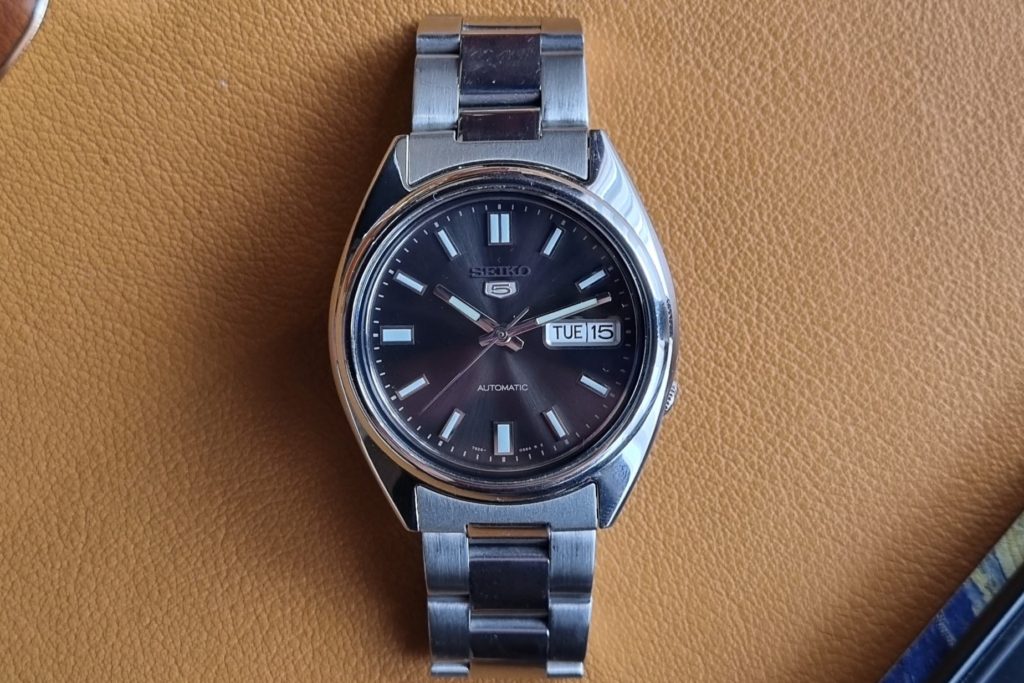The Casio A168 is a beloved retro watch, iconic for its sleek design and affordability at just $20. But Casio’s newer ABL-100, priced at $80, promises modern upgrades like Bluetooth connectivity and a step tracker while retaining that classic retro vibe. In this blog post, I’ll dive into the key differences between the Casio ABL-100 and A168, comparing their features, design, and performance to help you decide if the ABL-100 is worth the upgrade. Let’s break it down!
Differences in Build & Design
Display Differences
The Casio A168 features a bold, single-line time display that’s clear and easy to read. In contrast, the ABL-100 splits its screen into three sections, showing the time, a three-letter day, a full date (month, day, year), and a bar graph for step tracking. This multi-line display adds functionality but sacrifices some of the A168’s simplicity.

Bracelet Design
The A168’s brushed metal bracelet has a curvy, rounded design, which some users report as hair-pinching (though I can’t confirm this personally). The ABL-100 introduces a flatter, rice-grain-style bracelet that blends seamlessly with the case, offering a more polished and modern look. This cohesive design feels like a significant upgrade, making the ABL-100 stand out for style-conscious wearers.

Case and Button Layout
The A168 has a glossy case with “Electroluminescence” and “Illuminator” text, while the ABL-100 swaps these for “Illuminator” and “Water Resist,” adding “Step Tracker” and “Bluetooth” labels. The ABL-100 also tweaks the button layout, with the light button on the top right, doubling as a fourth button for easier navigation. The A168’s light button sits on the top left, with simpler controls.
Size and Weight
The A168 measures slightly smaller and thicker, with a protruding case back, weighing 48.2g. The ABL-100 is slimmer and flatter, measuring 41.6 x 37.9 x 8.2mm and weighing 58.8g. While the ABL-100 feels slightly heavier, the difference is barely noticeable unless you’re hyper-focused (like me during this review!).

Lighting: A Practical Upgrade
The A168’s electroluminescent blue glow is stunning but requires holding the button. The ABL-100 uses an LED backlight (amber) with customizable 1.5 or 3-second illumination, making it more practical for quick glances. While I personally love the A168’s blue glow, the ABL-100’s lighting is a functional improvement.

Features: Simple vs Smart
Casio A168 Features
The A168 is the epitome of simplicity:
- Stopwatch
- One alarm
- Hourly chime
- Auto calendar
- 7-year battery life (CR2016)
It’s reliable and perfect for those who want a no-frills timepiece.
Casio ABL-100 Features
The ABL-100 takes things up a notch with:
- Step Tracker: Displays steps (0–999,999 range) with a bar graph for hourly progress, goal setting (1,000–50,000 steps), and a reminder for low activity.
- Bluetooth Connectivity: Pairs with the Casio Watches app for automatic time adjustment, world time (300 cities), alarm settings, and a phone finder feature.
- Advanced Stopwatch: 1/100-second precision, up to 200 lap/split time records.
- Countdown Timer: 60-minute range with 1-second increments.
- Dual Time Mode: Easily swap between two time zones via the app.
- Five Alarms: More flexibility for reminders.
- 2-Year Battery Life: Uses a CR2016 battery with a power-saving mode to extend life.
The ABL-100’s features make it feel like a smartwatch without the need for charging, a huge plus for convenience.
Step Tracker Accuracy: Motivation Over Precision
The ABL-100’s step tracker requires 20 seconds of consistent movement to start counting, which helps filter out false steps. In my amateur test, I compared it to a Huawei Fitness Band (5,400 steps) and a Garmin watch (6,000 steps) after a day of normal activity. The ABL-100 logged 7,300 steps, overcounting by about 1,000 steps. While not as accurate as dedicated fitness trackers, it’s decent for casual tracking and serves as a motivational tool rather than a precision device.

Bluetooth and App Integration
The ABL-100’s Bluetooth connectivity is a game-changer. The Casio Watches app is user-friendly, allowing you to:
- Set alarms and world time effortlessly
- Track step data and view life logs
- Use the phone finder feature (a lifesaver for forgetful folks like me!)
The phone finder works even when the watch isn’t actively connected, as long as it’s paired beforehand.

ABL-100 Water Resistance: A Minor Disappointment
Both watches are rated for 30m water resistance, suitable for hand washing or light splashes but not swimming. I accidentally wore the ABL-100 while swimming in a river, and it survived (phew!), but I wouldn’t recommend pushing your luck. A 50m rating would have been a welcome upgrade for the ABL-100.
Price Comparison: Value for Money?
- Casio A168: At $20, it’s a bargain for a reliable, iconic retro watch.
- Casio ABL-100: Priced at $80, it’s a significant jump but offers Bluetooth, step tracking, dual time, and a refined bracelet.
The A168 is perfect if you love retro charm and basic functionality. The ABL-100 justifies its price with smart features and a modern design, appealing to those who want a hybrid of retro style and smartwatch functionality.
Is the Casio ABL-100 Worth the Upgrade?
The Casio ABL-100 is a compelling upgrade for those who want more than just a timepiece. The step tracker, while not perfectly accurate, motivates you to stay active, and the Bluetooth features (especially the phone finder) add practicality. The refined bracelet and slimmer profile elevate its style, making it versatile for casual or formal wear. However, if you’re all about the A168’s retro charm and iconic blue glow, and don’t need the extra features, stick with the classic.
For me, the ABL-100’s bracelet and smart features make it worth the $80, especially if you’re already a smartwatch user looking for a low-maintenance alternative. What do you think? Let me know in the comments which watch you prefer!
Get YOURS Here!
If you are interested in another $20 watch, read here: Casio LTP-V007: Cartier Tank Alternative





